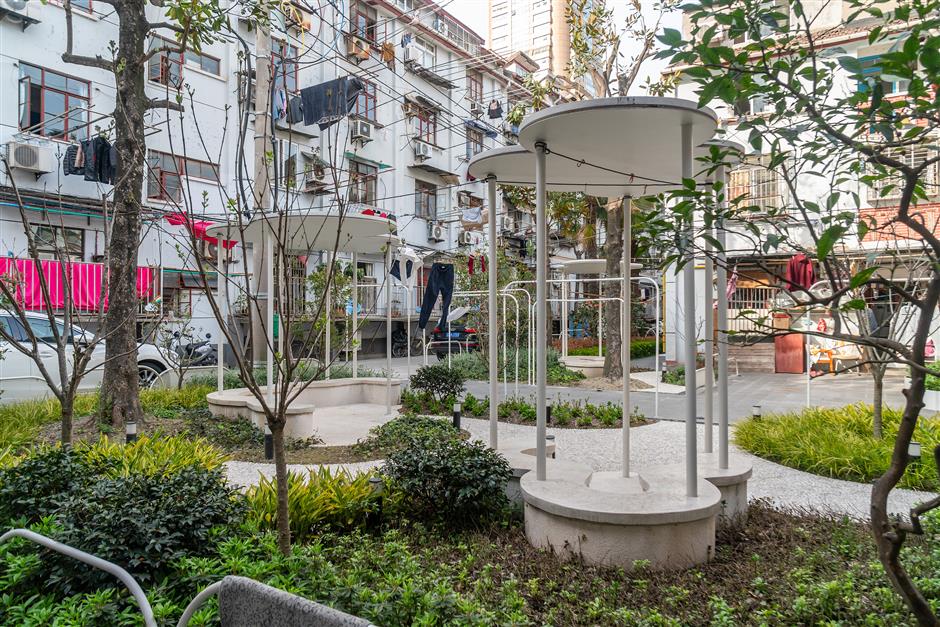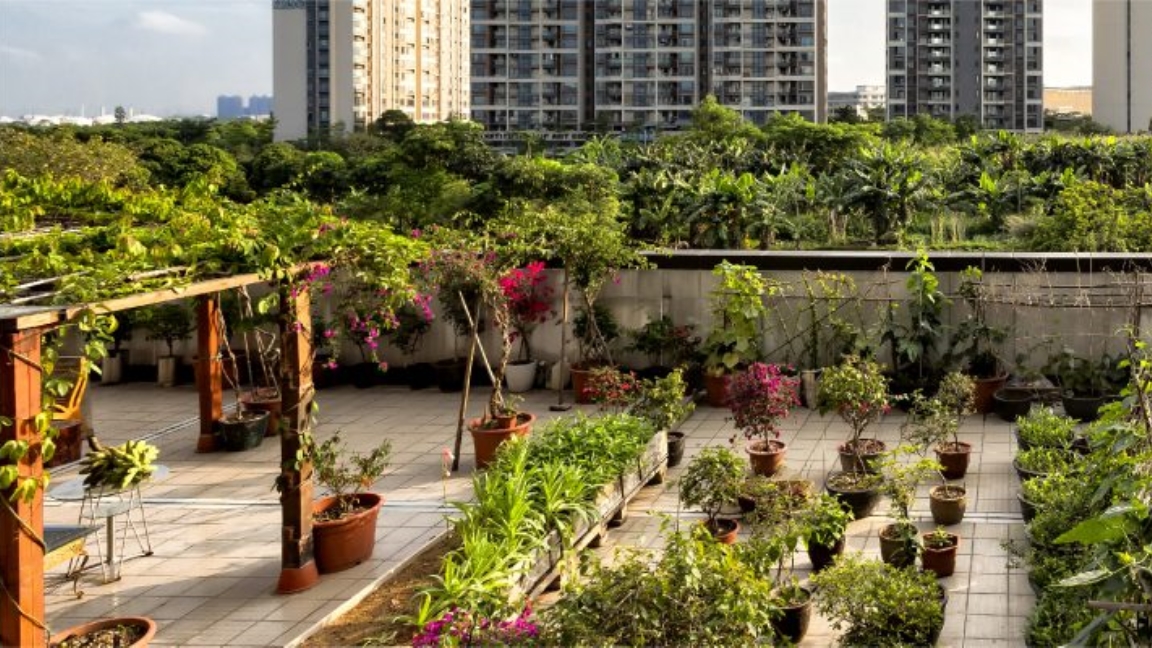
Growth Goes Green
China's economic miracle was once viewed as a calamity for the environment, but the nation has achieved what was once thought impossible: achieving growth while protecting the natural world. This series explores how the world's second-largest economy is reducing its carbon footprint even as its economy powers ahead.

It began with a door I had never noticed.
Tucked behind a rusted stairwell on the top floor of my apartment building in Shanghai, it looked like just another utility access – probably a place for cleaning supplies or old air-con units. But one late afternoon, chasing a breeze in the thick June heat, I turned the knob and walked straight into another world.
Under a soft wash of dusk light, rows of potted vegetables lined the edge of the rooftop, soaking in the last warmth of the day. Tomatoes hung in clusters like little lanterns. Basil and mint tumbled over the sides of recycled milk cartons. In one corner, a small plastic greenhouse protected delicate seedlings. A watering hose lay coiled beside an overturned stool. Someone had been here, just recently, tending and caring.
The city, with all its honking, clanking and striving, seemed to fall away. I could still see it, of course, glass towers in every direction, but up here, surrounded by greenery and quiet, I felt the rarest thing in modern urban life: pause.
That rooftop garden didn't just surprise me. It quietly re-centered me.
In Shanghai, where change is the only constant and speed is the dominant tempo, there is something radical about choosing to grow things slowly. The contrast between the skyline, forever reaching higher, and this humble patch of green could not have been starker. And yet, somehow, the garden felt more modern than the buildings. It felt like the future.
I began returning regularly, slipping up in early mornings or just before sundown. I started recognizing familiar patterns – cucumbers climbing up makeshift trellises, someone swapping out soil, the sound of a thermos being uncapped. I never saw the gardener, but I felt a presence. And then I began noticing more.

Shanghai residents are undergoing a quiet green transformation that starts in their neighborhoods.
It turns out, this isn't an isolated case.
Across Shanghai, a quiet green movement is unfurling in pockets and corners. It's not always visible to the untrained eye – these aren't large rooftop farms or tech-enabled "vertical agriculture" projects. Instead, they're improvised balcony gardens, stairwell sprouts, potted chives lining window ledges. Young people, office workers, artists, students and even tech professionals are carving out space in their lives to grow things: lettuce in leftover containers, chili plants in ceramic mugs, cherry tomatoes hanging from old bamboo poles.
One friend recently turned her 10th-floor balcony into a green nook she proudly calls her "edible jungle." Another swapped out ornamental plants for beans and eggplant, tracking their growth like personal milestones. A co-worker brings hand-grown coriander in repurposed takeaway boxes, sharing it at the office with quiet pride.
What's striking is how these gestures, though small, echo something deeply familiar.
Before China's rapid urbanization, gardening and food self-sufficiency were part of everyday life. In the 1970s and 80s, many of our grandparents grew vegetables in courtyards, along communal corridors or even in tin cans on their windowsills. It was a way of life shaped by necessity, not choice.
Today's young urbanites, living in high-rises and shaped by convenience, are returning to these habits – not out of economic compulsion, but intention. The irony is beautiful: In a tech-saturated, hyper-efficient era, many are finding comfort in doing something utterly analog, slow and wonderfully uncertain.

The city is getting greener with both public and private efforts.
Some call it a trend, but to me, it's something gentler and more powerful. A return. A reconnection.
This quiet greening of the city is not just aesthetic. It's not just for wellness or mood-boosting Instagram posts. It's becoming part of how sustainability is lived and felt, not just talked about. No one makes a big deal of it anymore, just like sorting trash or bringing your own bag to the grocery store. In fact, it's that lack of spectacle that makes it meaningful.
Sustainability, at least in Shanghai, is starting to shed its image as an "add-on" or niche concern. It's embedding itself into the routines of daily life. You see it in schoolchildren who reflexively separate food scraps, in elderly neighbors who compost and now in this quiet generation of plant growers who don't think of themselves as activists but still act.
This, to me, is the most hopeful kind of transformation: one that isn't proclaimed but practiced. It's what cities like Shanghai are carefully curating, not through loud campaigns, but through structure, nudges and cultural continuity. From the introduction of citywide waste sorting systems to incentives for green buildings and digital platforms that track household carbon footprints, the city is creating a scaffold. And residents are responding, not with fanfare, but with pots, seeds and patience.
There's something deeply human about growing your own food, even just a handful of herbs. It's an act of hope. You plant today, trusting something will come of it weeks or months down the line. You pay attention – sunlight, soil, water. You learn restraint. You harvest, then start again. In that sense, every small garden is a quiet act of optimism.
But we should also be clear-eyed. This alone won't solve the climate crisis. Balcony gardens won't offset global emissions or reverse biodiversity loss. But they do change something else – perspective.
If millions of people grow something, even a little, they begin to see the world differently. They think twice before wasting food. They respect the rhythm of the seasons. They begin to notice ecosystems, even if they're tiny and confined to a windowsill. And when enough people think and feel differently, larger systems begin to shift – consumer behavior, policy expectations, even urban planning norms.
In cities, change often feels impossible, too big, too political, too abstract. But change also lives in the micro. In the balcony garden. In the habit that becomes culture. In the echo between generations.
As I write this, I've just returned from the rooftop garden. The chives are flowering. The tomatoes are ripening. Someone has planted a new row of bok choy, neatly labeled with hand-drawn markers. I still haven't met a gardener. But I don't need to. I already know them. They're in every building, in every borough. Quiet, persistent, hopeful.
And in the middle of this vast, grey concrete city, they remind me that the future might just grow leaf by leaf – if we let it.
(The author is an adjunct research fellow at the Research Center for Global Public Opinion of China, Shanghai International Studies University, and founding partner of 3am Consulting, a consultancy that specializes in global communications.)

